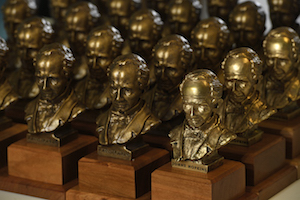
Pizza’s Here!
A team of eight undergraduate and graduate engineering students are developing a system that can shuttle food to hungry customers across the Johns Hopkins Homewood campus.

A team of eight undergraduate and graduate engineering students are developing a system that can shuttle food to hungry customers across the Johns Hopkins Homewood campus.

Johns Hopkins has launched an interdisciplinary institute aimed at developing the mathematical theories that will hasten the analysis of the massive amounts of data being used to study everything from the inner workings of the human cell to the structure of the universe.

Clark Kent has Superman. Peter Parker has Spider-Man. And Justin Stith has Jay. The Johns Hopkins Blue Jay, that is.

Residents of the tiny Guatemalan village of Chicorral used to struggle up and down a steep ravine to fetch water from a stream for cooking, bathing, and drinking. Thanks to a solar-powered pump installed a few years ago by Johns Hopkins engineers, water now comes directly into their homes via a pipe.

Through their work in hospitals and labs, Johns Hopkins engineering undergrads come up with real-world solutions that are critical to improving patient care.

Scientific knowledge—not technical skill —is what engineers need to tackle modern challenges and meet new developments with creativity and innovation. Such was the fervent belief of Robert H. “Rob” Roy ’28.

The pace of change here is almost dizzying. In the last year alone, the Whiting School’s footprint on Homewood campus—and slightly beyond—has increased by 20 percent, allowing us to expand our critical core research facilities and world-class laboratories, and add more space for centers and institutes.

A small-scale bust of Mr. Johns Hopkins—the so-called Bronze Johns—has been awarded to distinguished alumni and friends of the institution for their outstanding service to the university since 1973. However, over the 45-year legacy of the Heritage Award, the statuette masters—the original sculptures that casting molds are made from—have deteriorated.

Poly’s graduates have long been a regular—and welcome—addition to the Johns Hopkins Engineering student body.